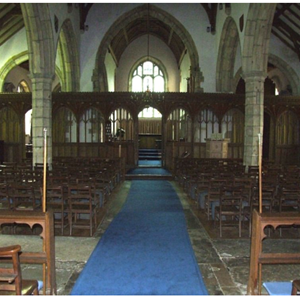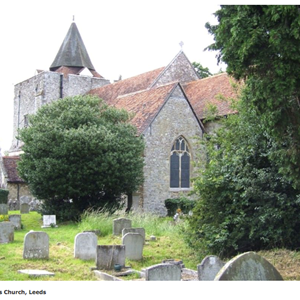St Nicholas Church
This group of three parishes, which has 4 churches plus a share in an ecumenical partnership, is now part of a new, larger North Downs Benefice. The organisation is in transition pending the filling of clergy vacancies and this web site will eventually be modified or superseded. Meanwhile this site covers the following parishes:
Leeds, Broomfield, Hucking, Hollingbourne and Kingswood Churches
The “Clergy team” is as follows:
Team Rector: The Rev Canon John Corbyn
Team Vicar: The Rev Steve Hughes
Assistant Curate: The Rev Melissa Carter
ALM: Derek Bilbrough
The Rev Canon Robin Gill is retired but spends part of his time in Hollingbourne. He assists on a non-stipendiary basis when resident.
“Area Dean” : The Rev. Mark Pavey
A Brief History of the Church - The Church of Saint Nicholas at Leeds was already well-established in Anglo-Saxon times, the current nave being just a little larger than the entire Saxon church. When the Normans arrived they made major changes, including the massive twelfth century tower, one of the county's best half-dozen examples. The Normans' Doomsday Survey of 1086 recorded nearby one of only three vineyards then in the whole of Kent.
In 1492 John Brandon bequeathed money for reparation of the church steeple and 260 years later Edward Harrison the Curate wrote peevishly that -the steeple was till'd, the church adorned, the chancel enriched and the curate impoverish't.
Inside the tower the ringing chamber has seen regular strenuous activity for centuries. The ten bells are housed in an ancient oak frame, one of the earliest surviving ten-bell frames in the UK. The youngest six bells are 256 years old; three are dated 1751; the biggest and oldest, the tenor, was made in 1617 by Joseph Hatch, a local bellfounder of great fame. The tower houses a 277 year-old clock, also made locally. The church organ is a young instrument by comparison, built and installed in 1833 and paid for by public subscription at £399.
The nave's crown-post roof dates from the fifteenth century; let into the nave's floor are two brasses, one commemorating William Merden who died in 1509, the other Katherine Lambe who died in 1514. The chandelier was donated by John Saxby, who died in 1778.
Saint Nicholas boasts a most impressive rood screen. This is a finely carved wooden wall, separating nave from chancel and extending across the entire width of the church. It contains eleven bays and three entranceways.
Some of the church's silver plate is on display in the chapel at Leeds Castle, one flagon weighing 1340 grams and dated 1750. The ancient registers and other records can be seen at the Centre for Kentish Studies in Maidstone.
The churchyard is extensive, running to four acres. Its natural meadow grasses are attractive at any time but excel in spring when naturalised bulbs of snowdrop and narcissus produce spectacular, successive swathes of colour.


